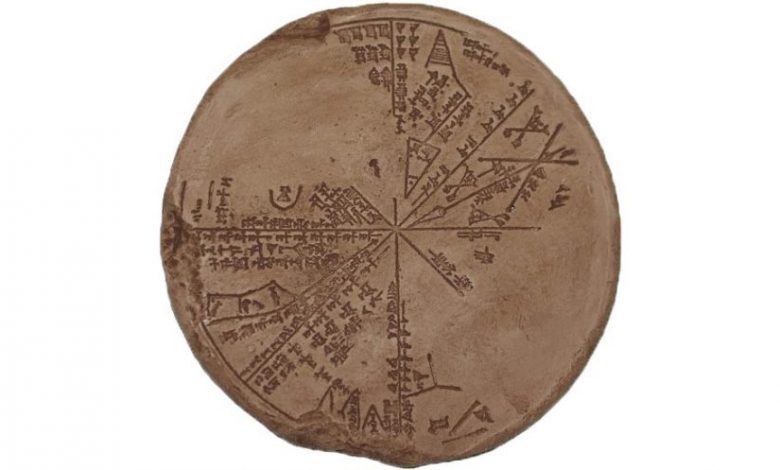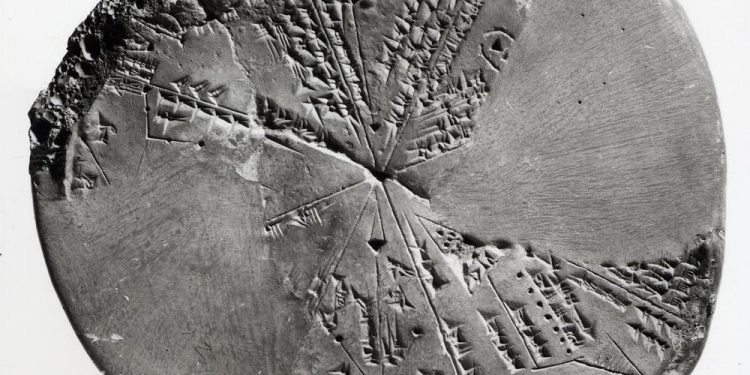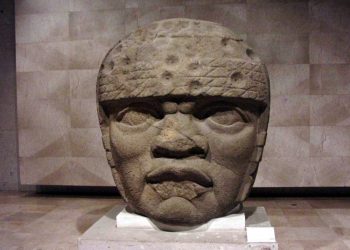The ancient Sumerian civilization may have been underdeveloped in the sense of a written script, for example, but they sure understood astronomy and the night sky to a certain extent. This is evident from a 5500-year-old Sumerian Star Map called the “Planisphere,” which is stored in the British museum today. It was discovered more than 150 years ago. It was only translated over a decade ago, revealing the oldest documented observation of an extraterrestrial object that came from space and landed on the Earth’s surface – a comet.
So, let us discuss the most important facts about this ancient Cuneiform tablet.

1. The translations revealed the exact date of the comet’s impact – June 29, 3123 BC
The inscriptions on the tablet give a precise date and time when the alleged meteor hit the Earth – June 29, 3123 BC.
2. The Sumerian Star Map is one of 20 000 tablets discovered in the ruins of the Royal Library of King Ashurbanipal
Archaeologists spent many years excavating the ancient site of the city of Nineveh and discovered more than 20000 ancient tablets. The one we are discussing today, called the “Planisphere,” is considered by many to be the hardest to translate. Fortunately, 150 years later, the remaining inscriptions were translated and revealed incredible data.
3. The Planisphere is an exact copy of the observations of an ancient Sumerian astronomer
Scholars suggest that the Planisphere is an exact copy of a more ancient original tablet made by the contemporary astronomer and observer of the real event.
4. The Sumerian Star Map includes a sequence of eight pictures that describe the event from the emergence of the comet to the final impact
The tablet is small in size, measuring only 14 centimeters in diameter, but it has been masterfully divided into eight sections or pictures describing the event in sequence. Nearly half of the inscriptions have been lost throughout the ages, but the remaining bits were more than enough for modern technology to translate.
The tablet creator managed to present an impressively detailed explanation of the observation and final impact on such a small surface.
5. The Sumerian Star Map also includes drawings of constellations and their names
As we all know, the ancient people had a much better night sky view and clearly knew about the constellations. The Planisphere includes a series of drawings of constellations, including their names in connection to the comet’s flight path. For example, the third image shows that the comet reached Orion around the 9th day of observance.
6. The ancient astronomer used impressively accurate trigonometrical measurements to document all flight data from the point the comet appeared
The ancient astronomer had an impressive knowledge of trigonometry and documented the comet’s flight path, time, and distance as soon as it appeared in the sky.
7. The first five images describe the 20 days of observance while the comet was in the sky
As previously mentioned, the tablet is divided into eight sections or images that form a sequence. The data presented sequentially from the first to the fifth includes the observance from the first astronomical sighting to the end of the 20th day before the impact of the 21st.
8. The sixth image explains the impact as seen on the horizon and the observations after the event
As described on the tablet, the observer did not witness the impact from a close distance as it would have meant the end of his life, perhaps, but he described flash lighting in the sky and the grand rise of ash plumes as a result of the impact.
9. The last eighth image includes calculations of the flight path made after the impact on the 21st day of observation
The ancient astronomer did not end his observations before making exact calculations of the comet’s flight path before the impact. As a whole, the whole sequence of data inscribed on the tablet is more than impressive, given that the observations were made more than 5000 years ago.
10. Scholars argue over the plausibility that the comet described on the Sumerian Star Map may have brought the end to several ancient civilizations
Meteors have terminated life on Earth on more than one occasion throughout history, and scholars theorize about the possibility that this comet could have had a major impact on life in the ancient world. More specifically, the ancient city of Akkad, which has not yet been found by archaeology, could have been destroyed by the comet. This ancient city’s exact location is unknown, but it would have been destroyed if it had been close to the area of impact.
Join the discussion and participate in awesome giveaways in our mobile Telegram group. Join Curiosmos on Telegram Today. t.me/Curiosmos











